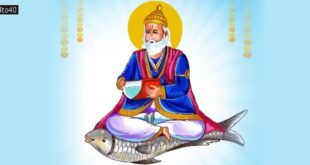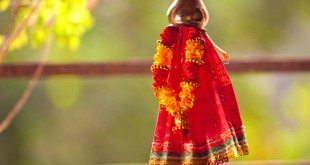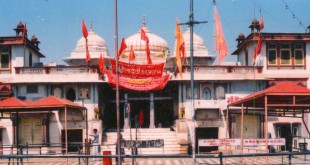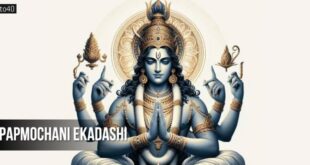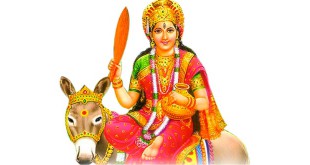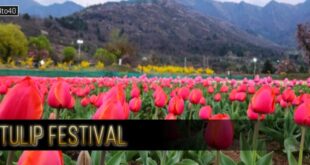Ganeshotsav: Lokmanya Bal Gangadhar Tilak’s role in making it Maharashtra’s main festival and how it helped to fight British occupation – A look into history
Ganeshotsav celebrations serve as a reminder that when we adapt something rooted in ancient tradition, it becomes a powerful force for social and political change.
Ganeshotsav: Tilak’s role in making it into a Major Hindu Festival
Ganeshotsav is currently in full swing, especially in Maharashtra, where Lokmanya Bal Gangadhar Tilak transformed Ganeshotsav from a private celebration into a major public festival. The festival, where Hindus bring a Swaroop of Bhagwan Ganesh into their homes, became a symbol of unity and resistance against British rule, all thanks to Lokmanya Tilak.
The history of Ganeshotsav’s evolution is deeply rooted in the spirit of India’s struggle for independence. It is a testament to how cultural revival can become a powerful tool in the fight for freedom and self-realisation. Interestingly, although Maharashtra is known for its renowned grand Ganeshotsav celebrations today, historical accounts suggest that Madhepura in Bihar once held equally impressive festivities. However, over time, those festivities faded away due to various reasons.
Ganeshotsav : From ancient roots to a public movement
If we look at the history, Ganeshotsav holds a significant place in Hindu worship. References to Bhagwan Ganesh can be found in various Puranas, including Agni Purana, Brahmavaivarta Purana and Skanda Purana. The origin of the festival can be traced back to the time of the Satavahanas, Chalukyas, and Rashtrakutas. These dynasties were instrumental in promoting Ganesh worship across their domains.
The cultural thread of worshiping Bhagwan Ganesh continued through the Maratha Empire, where Chhatrapati Shivaji Maharaj elevated Lord Ganesh to the status of ‘Rashtradev’ or the state deity. His devotion towards Bhagwan Ganesh further embedded the festival into the region’s socio-religious fabric.
After 1818, Ganeshotsav retreated into private celebrations within households as the Peshwas lost their hold on the region. It took another 75 years for the festivities to become public again, when, in 1893, Lokmanya Bal Gangadhar Tilak revitalised the festival and turned it into a public event to mobilise Indian sentiment against British rule. Ganeshotsav became a platform for Indians to gather, express solidarity, and communicate nationalist ideas under the guise of a religious festival.
Early celebrations in Bihar: A forgotten chapter
Before LokManya Tilak transformed Ganeshotsav in Maharashtra, the festival was very popular in the Madhepura region of Bihar. The celebrations are mentioned in the autobiography of Mahamahopadhyay Sir Ganganath Jha, who was born in 1872 in Madhubani’s Sarisab Pahi. Jha was a renowned scholar of Sanskrit and Indian philosophy.
His writings revealed that every year, during the month of Bhadrapada, Maharaja’s brother Srinandanjee would organise a week-long Ganesh Puja on a very large scale. However, these celebrations were lost in history following lack of political support and other disputes. On the other hand, Ganeshotsav celebrations gained momentum in Maharashtra and became a national symbol of unity against colonial oppression.
Lok Manya Tilak’s vision: Uniting Indians through Ganeshotsav
The idea behind publicising Ganeshotsav was both symbolic and strategic. It was a time when the British had banned public assemblies. Lokmanya Tilak used Ganeshotsav festivities to bypass these restrictions and promoted a sense of unity and identity among Indians. Larger-than-life public celebrations, full of music processions, and cultural programs transformed Ganeshotsav into a powerful tool of mass mobilisation.
Tilak was clear in his vision. He wanted to use the festival as a medium to bridge the gaps between different sections of society, including overcoming caste barriers. According to Tilak, Ganeshotsav had the potential to foster a sense of trust and affection among the people of India and raise collective national pride. All these qualities were essential for the freedom struggle. Tilak incorporated social and political messages into the festivities while keeping the spirit of resistance alive. He educated the masses about their rights and duties towards the nation on the sidelines of the Ganeshotsav festival.
Ganeshotsav as a catalyst for independence
Tilak’s idea worked like a charm, and his message to the people of India broke boundaries like never before, bypassing the censorship imposed by the British. The festival thus became a stage for speeches, performances, and discussions about independence, self-rule (Swaraj), social reforms, and making Ganeshotsav an integral part of the larger national movement. Tilak’s call for “Swarajya is my birthright and I shall have it” resonated deeply during the festivities and attracted people to participate actively in the struggle for independence.
Furthermore, Ganeshotsav also provided a stage to address social issues, including untouchability and communal harmony. Tilak integrated these themes within the festival, providing it with a broader scope of making India inclusive and unified. Tilak made sure that no communal tensions erupted during the festivities, even when religious sentiments ran high. The British policy of “divide and rule” was countered effectively with Ganeshotsav celebrations, which fostered Hindu-Muslim unity on several occasions.
The legacy of Tilak’s Ganesh Utsav
Ganeshotsav festivities have moved past their initial form, becoming more grand and vibrant, attracting millions of devotees. The popularity of the festival is a testament to Tilak’s insight that cultural unity has the potential to pave the way for political freedom.
Bal Gangadhar Tilak revived Ganeshotsav celebrations not only as a cultural revival but also as a strategic move that laid the groundwork for a mass movement against the British. His efforts ensured that Bhagwan Ganesh would forever be linked to the Indian struggle for independence, making Ganeshotsav much more than just a festival; it became a symbol of the nation’s fight for freedom and identity.
Ganeshotsav celebrations serve as a reminder that when we adapt something rooted in ancient tradition, it becomes a powerful force for social and political change. Tilak’s legacy lives on and re-emerges with the drumbeats, processions, and chants of “Ganpati Bappa Morya” that echo with the same spirit of resistance and unity that first brought millions together over a century ago. The story of Bihar’s once-grand Ganesh celebrations, though largely forgotten, also serves as a reminder that cultural traditions can be lost without political support and recognition, which contrasts with the way Maharashtra celebrates the festival every year.
 Kids Portal For Parents India Kids Network
Kids Portal For Parents India Kids Network

